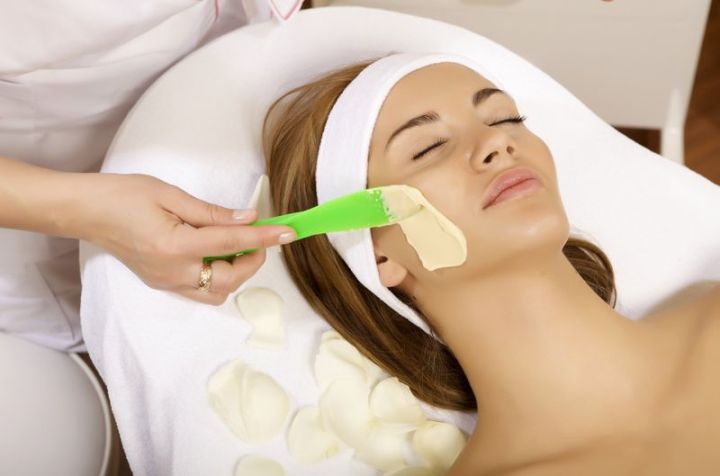Combination skin is the more popular skin type compared to oily skin, dry skin or normal skin. But what’s combination skin exactly? As the name suggests, it is characterized by having some sections, especially the T zone oily and others like the cheeks being normal or dry skin. According to Farber, a dermatologist, “People vary from dry to oily depending on the activity of their sebaceous glands, which produce oil.” He continues to say that, “People with combination skin may notice they are particularly oily around their T-zone, or nose and central face, which are areas most packed with oil glands.”
Often, people with combination skin don’t know how to treat combination skin and may at a time subject to parts of their faces to harsh chemicals. These efforts may be a bid to try and make their skin appear even and normal while not being aware of the fact that having combination skin is a naturally occurring phenomenon. These practices may, in fact, make your skin worse or in the process cause irreparable damage, especially if our skin is also sensitive combination skin.
Good news is that your skin may not always be the combination type, there’s a possibility of alterations in time. Farber continues to say that a variety of things that happen throughout life, including stress, changes in hormones with puberty, your diet and lifestyle, menopause in women, and even seasonal changes will affect the sebum balance of your skin. So while you can’t change your skin entirely, your skin will most likely evolve slightly over time with proper skincare for sensitive skin and maintenance. And one way that you can help produce immediate changes is focusing on using the right skin care products. This article will help you learn how to take care of combination skin.
How to test for Combination skin
Some markers for combination skin stand out more than others. So if you’re not sure whether you have combination skin, here is a simple test to determine whether or not your skin qualifies as to what’s combination skin.
- Wash your face with a gentle cleanser.
- Pat it dry with a soft towel and do not rub.
- Then wait for about 10-15 minutes, make sure you don’t apply moisturizer or any other skincare product as this might sully the results.
If you do have combination skin, your nose, chin, and forehead will look oily and shiny. This is known as the T-zone. Your cheeks, temples, and other areas, however, will feel dry and tight because they are either normal or dry skin.
Another reoccurring phenomenon that may indicate you have combination skin is that you have a hard time finding skin care products that work. Some make you breakout, while others leave you too dry and dull.
Problems associated with and how to treat combination skin
- Twenty minutes after washing your face, you see oiliness in certain parts of your face and not in others.
It can be hard to know how to take care of combination skin. Some parts will require different products than the rest of the parts. The best products to go for are those for sensitive skin. They tend to be milder.
- The pores on your nose are visibly more significant than the pores on your cheeks and jawline.
After using a face wash for combination skin, rinse your face with cold water. Although there’s nothing that can be done to reduce the size of your pores, this will close them after steaming and consequently make them appear smaller. Applying products that don’t clog also helps. we shall discuss ingredients later.
- When you use a moisturiser for normal skin, it makes your cheeks feel good, but your T-zone looks and feels oily
These days moisturising and yet mattifying products are almost on every cosmetic shelf. When applied on the nose and forehead, they prevent your T-zone from shining while your cheeks remain dry. Thus, creating a toned look. Yes, you still need to moisturise but use a lotion that combines mattifying ingredients with oil-free hydrating ingredients.
- You have dandruff.
It is very common for women with combination skin to have dry, flaky patches on their scalp as well,” says Francesca Fusco an assistant clinical professor of dermatology at Mount Sinai School of Medicine and an assistant attending dermatologist at Mount Sinai in New York City. It is an indicator you also have combination skin.
- You get breakouts and dry patches at the same time.
The best solution for when your face decided to go Bruce Banner on you is to spot-treat the affected areas with the appropriate face wash for combination skin and follow up with an oil absorption mask for the T-zone and the moisturising masks for the dry areas at least once a week. For the rest of the areas, once a week, spot-treat your face with two moisturising masks.
- The weather determines the state of your T-zone.
When the weather is hot, your T-zone tends to get shiny faster than it usually would if you’re outside, sensitive combination skin could even change in a matter of minutes. The quickest and oldest solution is blotting papers. Appling mattifying primers could also delay how soon the shine appears.
- Your flaky areas are within your T-zone.

The Daily Routine to Take Care of Combination Skin
Combination skin types should avoid products with the following ingredients:
- Sulfates and alcohol aggravate combination skin which is already polarised.
- Mineral Oil it is pore clogging.
- Sodium Lauryl and Laureth Sulphate strip the skin of its natural oils.
- Hot water can further dry out already dry cheeks
- Excess exfoliation: this consequentially triggers the oil glands to produce more oil to compensate.
The Regimen
Start with a gentle water-soluble cleanser.
No matter what the base, the goal for any face wash for combination skin is for it to effectively remove impurities, debris, and makeup without leaving skin feeling tight or dry or greasy. You can also consider a very soft-bristled cleansing brush every once in a while if you hadn’t already manipulated the surface a lot during the day. The softness is necessary because anything less will drive your skin crazy from the feeling of aggravation and tightness it causes.
Use a gentle, non-abrasive, leave-on BHA exfoliant.
As we already mentioned, don’t exfoliate more than twice a week. A BHA exfoliant helps shed dead skin generally without abrasion, unclogs pores, lessens oily skin, and at the same time gently smooths rough, dry, flaky skin and revives a healthy glow.
Apply a hydrating, soothing non-irritating toner.
Such a toner will help nourish dry skin and minimise oiliness at the same time granted it is filled with a healthy amount of skin-replenishing ingredients and antioxidants. A well-formulated toner won’t make the dry areas drier or the oily regions oilier.
Use a nighttime moisturiser with a gel, serum, or even a liquid texture all over your face.
Pick one that contains revitalising ingredients, antioxidants, skin-replenishing ingredients, and skin-restoring ingredients. These are imperative to help calm skin, lessen excess oil on skin’s surface, and im¬prove dry areas, including around the eyes. When combined, these ingredients have remarkable anti-ageing properties for skin.
Always protect your skin from sun damage. Use a feather-light formula, and it helps if it has a matte finish. No skin type is exempt from the need for a broad spectrum sunscreen rated SPF 30 or higher and applied every day of the year. And don’t forget to refer to the neck. Also, use a nourishing serum over the dry areas and then apply the ultra-light sunscreen over.
Lifestyle Changes To Help Alleviate Combination Skin
As mentioned earlier, sensitive combination skin types can benefit from some lifestyle changes that may help balance your skin and eventually. These include:
- Exercise. This gets the blood pumping, which delivers critical nutrients that you ate, as mentioned in moisturising from the inside out, to your skin. Sweating out also helps get rid of the toxins that were produced by metabolic activities in your skin cells.
- Moisturize from the inside out. It is true what they say; you are what you eat. The challenge with combination skin is to get enough moisturiser into it without clogging pores. To bypass this, moisturise from the inside out with essential fatty acids. Eat more salmon, walnuts, and flaxseed, and consider taking fish oil or flaxseed oil supplement.
- Protect. Like all skin types, your skin needs protection from the environment, mainly from damaging UV rays. Hats and shade are best, but also choose a safe sunscreen and proper to keep your fragile cheeks looking lively and youthful.
- Avoid harsh cleansers. We covered this earlier, but we can’t emphasise this enough. Things like sulfates, alcohol, and soap can strip your skin of its natural oils. You may think that will help your T-zone, but in truth, it will encourage it to produce more oil. Stay away from harsh, chemical ingredients.
- Practice stress relief. Stress can make your skin more reactive; you may have notices acne forming when you haven’t had enough rest in both the oily and dry areas. Try meditation, yoga, tai chi, music, whatever helps you relax.
- Avoid pore-clogging products. In your skin care and makeup products, check for non-clogging declarations. Always choose those that are made for oily or combination skin they tend to be more sensitive. Avoid petroleum-based moisturisers like mineral oil in all your products, particularly moisturisers and foundations.
- Choose fragrance-free. Avoid products with chemical fragrances and other irritating ingredients.
In conclusion, knowing what’s combination skin will help you treat your face as gently as possible. Going for everyday baby care products ensures that they are safe for you and your skin. In addition, pay close attention to the ingredients contained in your products. And lastly, having a morning and night skin care regimen will help you maintain healthy skin in the long run.

